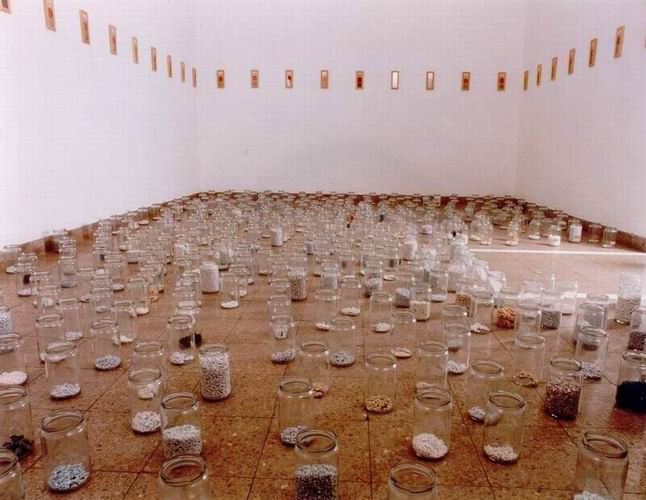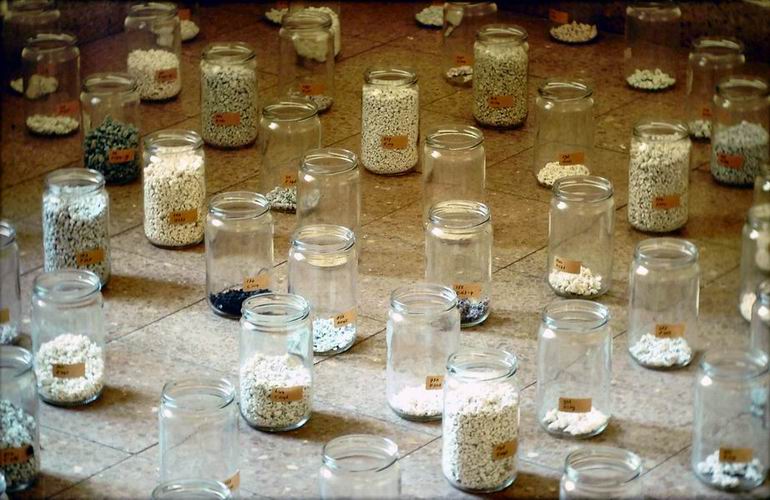|

|
|

|
Art Processing
Installations , Artists' House, Jerusalem 1996 / Installaties, Kunstenaarshuis, Jeruzalem 1996
|
|
|
Transformed Images and Art Processors
| |
|


|
515 (out of 1000) numbered glass jars, containing small particles of
different tints and colours, were spread on the floor. Each jar contains
one drawing or print transformed into pulp grains. Titles, dates and measures
of these killed drawings could be found on a list in a book in the adjoining
room. The transformed images were shown earlier in two different arrangements
in Holland (Groningen and Amsterdam).
Ca. 140 framed small oblong watercolours (22 x 9 cm) are hanging on
eye-height with intervals of 35 cm on the walls of all three rooms. They
all show a round red stone with a hole inside a glass jar, standing on
a square, but none are equal. The red rings refer to the round stones of
antique olive presses, abundant in Israel. The Art Processors, according
to my idea, receive anything called art with their antenna-like stick and
transform it into something else. They connect the rooms and refer to the
forms of the works: the jar-like forms refer to the jars in room 1, being
watercolour constructions they refer to the construction -in room 2 and
the mass of frames refers to the frames in room 3.
These watercolours were shown in a different constellation in the Jerusalem
Theatre.
| |
|
Destruction Construction
| |
|

|
In a one square meter vitrine on the floor there is a watercolour construction,
composed out of three intersecting jars.
| |
|

|
Such constructions I started to make after I destroyed the 1000 drawings.
| |
|

|
The watercolour is surrounded by pulp grains.
| |
|
Mixed Dutch Landscapes
| |
|

|
On the hidden roof floor of the Artists' House I found hundreds of old
frames of different sizes and characters, once used by many different artists
for exhibitions or sales in the shop.
| |
|

|
I arranged them in a rectangle on
the floor and I filled each of them with paper grains, in different grey
tones and a few reds.
| |
|

|
The frames were like dikes around paper polders.
The paper grains were made from all kinds of printed information and referred
to an archive in drawers.
| |
|
|   
| |











